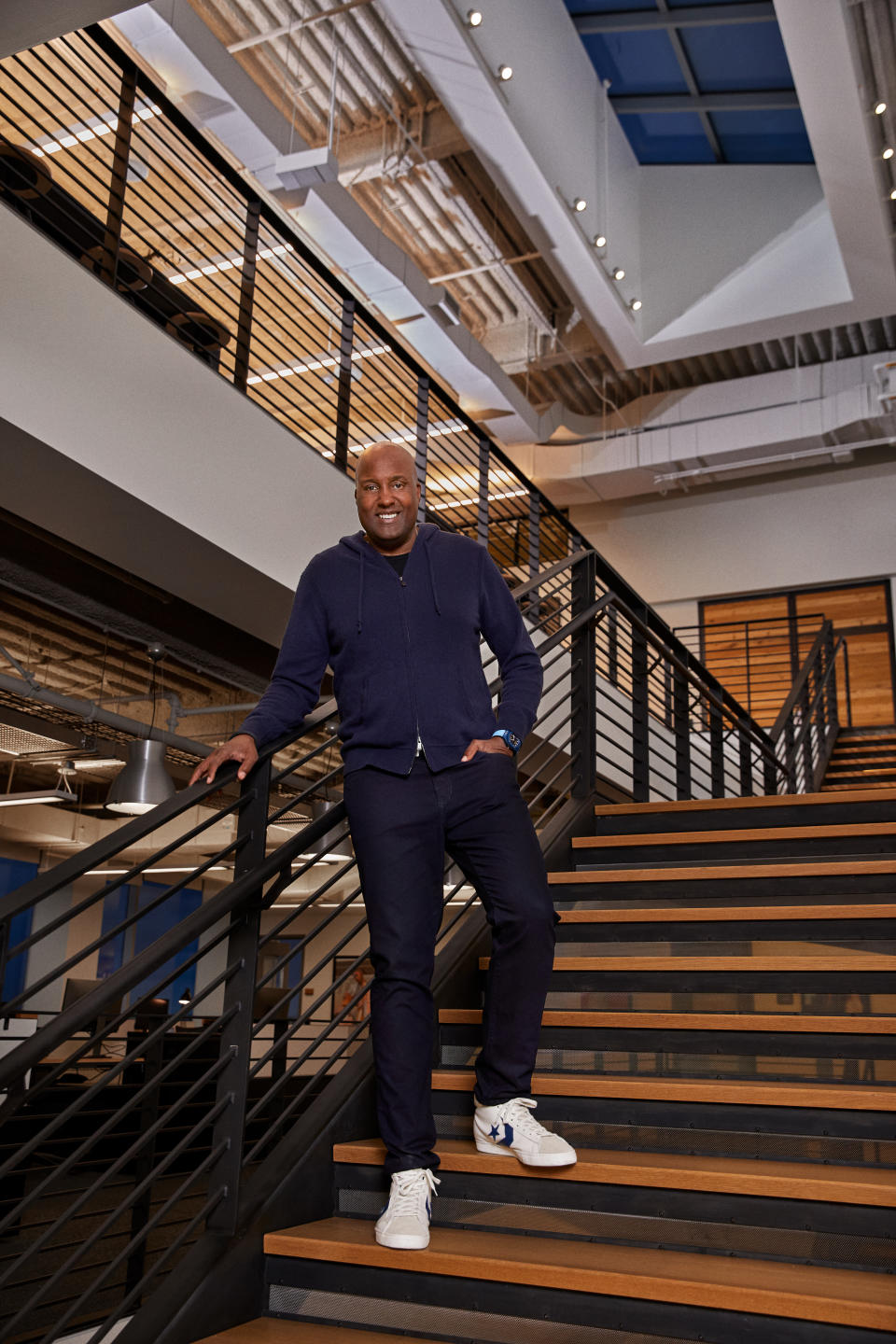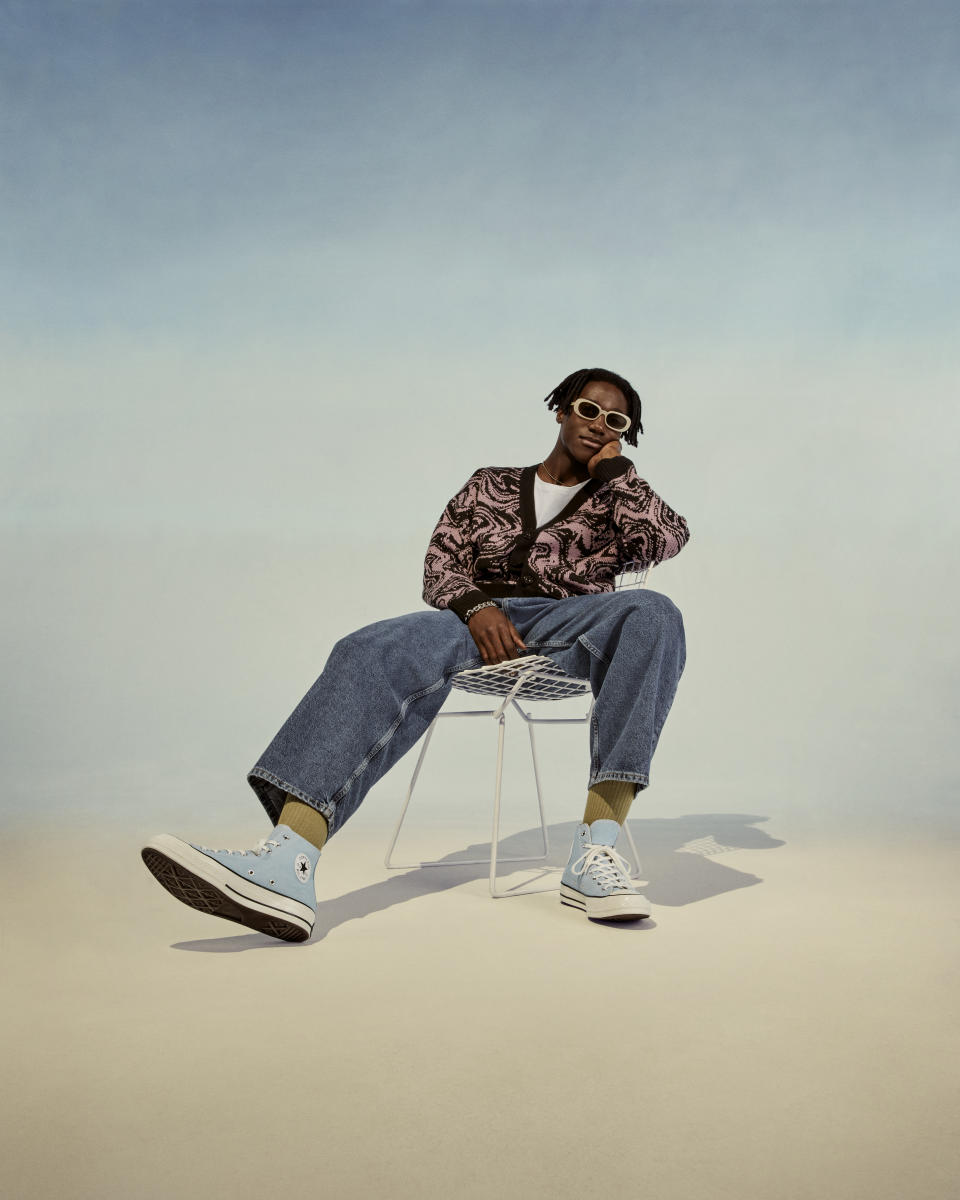Converse CEO Talks Pandemic, Strategy and Consumer Connections

The pandemic, upticking inflation, supply chain issues and the war in Ukraine are weighing on businesses around the globe, but Converse’s president and chief executive officer Scott Uzzell is counting on consumers and employees to see the brand through.
Having joined the company in 2018 from Coca-Cola, he leads 650 staffers in the corporate headquarters in Boston and 700 more in Converse’s international corporate offices. In total, the company has 3,500 employees in corporate, retail and distribution centers. During a recent interview, he said, “We had an amazing culture before the pandemic. People collaborated, worked well together. As I like to tell people from my former industry, they don’t view this as a job. The skate team skated to work. People working on basketball play basketball at lunchtime. My designers and creatives, the things that they do in their hobbies are the same things that they do during the day.”
More from WWD
Converse learned to keep that culture “really tight” in the past two years and has a hybrid work environment. Going forward, the company is blending the best pre-pandemic elements and lessons from the crisis with the endgame being to create flexibility for the team, while still collaborating and being together when needed, according to Uzzell. The advent of technology, which has become routine in the past two years, makes people feel connected even when they’re not in the room, he said.
Nike acquired Converse for $315 million in 2003. As a Nike-owned entity, Converse does not break out sales, but footwear — no surprise given its heritage and range — accounts for the majority of the business. Apparel and accessories were described as a key part of the brand’s growth plan. Declining to specify the percentage breakdown of women’s and men’s sales, Converse reported that women represent the majority of overall sales and men’s is a key growth area in the Gen-Z base of consumers between the ages of 16 and 24.
The company’s ambassador program features 2,500 “young passionate creators” from around the globe who help keep Converse well-centered, according to Uzzell.
Consumers are at the center of everything the company does, especially in that Gen-Z age range, Uzzell said. Converse has about 1,500 doors around the world, including ones it owns and franchises. Apparel is sold in all of the brand-owned retail stores, “but we know it can be a bigger part of our business but it’s an important part of our business. Consumers that love our footwear also like our hoodies, T-shirts, etc.,” Uzzell said
Declining to disclose the number of stores that will open or close this year, he said, “We’re going to continue to open stores where it makes sense. We’re always evaluating the stores that are either not in the right spot or that we need to make an adjustment on every year.”
Converse is creating by Asia, for Asia, product concepts and investing in local product creation. New e-commerce experiences are being set up in greater China and Korea, among other parts of Asia. Last fall the brand opened its largest door in China — the 3,800-square-foot Beijing Wangfujing flagship. That launch featured the global expansion of the product personalization concept of Converse By You.
In North America, the company aims to build on its momentum, with skateboarding and collaborations continuing to be opportunities, especially with male consumers. Another one of the company’s newer stores, its Citadel location in Southern California, has a Jumbotron playing videos of skaters, a skateboarding ramp and offers wear testing.
In Europe, the company plans to continue to foster an elevated brand image through its Create Next brand campaign that highlights its All Star community of designers and creatives.

Courtesy of Converse
All in all, Converse’s growth strategy involves digital direct acceleration, momentum in North America and expanding its product range such as new distinctive styles like the Chuck 70, the Run Star Hike, Chuck Taylor All Star Lugged and the Chuck Taylor All Star CX FlyEase, which incorporates Nike FlyEase technology.
As for dealing with current industrywide challenges such as supply chain and shipping issues, the war in Ukraine, and consumers’ concerns about inflation, Uzzell said, “What we’ve learned over the last two-plus years is that the uncertainty and what’s-next in the world is the new normal. We have to make sure we take care of our people, our team, focus on things that are brand-right that make the most sense. We share consumers where we can and we continue to mitigate challenges as they come up.”
Citing the company’s last several quarters of results, he said, “We’re growing our business. We’re serving our business. Demand is a lot higher than our current performance because we don’t have as much product as we want. But our teams are doing the best jobs they can to work with our factory partners to make sure we’re serving demand as best that we can. We’re not serving at 100 percent and that’s just the way it’s got to be for some time in the future.”
While digital sales have been strong for Converse — as well as other athletic and apparel brands — there is a renewed interest in in-store shopping. Noting how consumers are looking for both, Uzzell said they want to see things on their mobile devices, go into “a really cool live shopping experience,” and might still choose to order the product on their devices to have the goods shipped to their homes rather than carry it. “Brands that are able to navigate both will be the brands of the future. We are investing in digital, which has grown exponentially in the last three to five years and will continue to grow. But we’re also making sure we’re driving immersive, elevated consumer experiences in our own stores or partner stores.”
In the past two years Converse has partnered with dozens of individuals and brands to create products. Case in point: the Converse site showcases consumers styled with the brand or its Instagram shows such collaborators as Rick Owens, Samuel Ross of A-Cold-Wall and Comme des Garçons Play. There are also references to basketball standouts like Draymond Green, Natasha Cloud and Kelly Oubre Jr., who are among the athletes who have partnered with the company.

Courtesy of Converse
Asked how the limited-edition shopping model — a dominant practice in the industry — squares with the importance of sustainability, he said, “We’re continually focused on sustainability [singling out the brand’s Renew collection as an example]. We’re doing everything we can to reduce our impact on the environment. Like Nike, we’re part of a strategic initiative over the next several years to do everything we can to limit our impact on the environment that we do business in and we’re making marked progress. As it pertains to collaborators specifically, our collaborators really make sure we stay true to the brand and we stay connected to our consumers and continue to tell amazing stories that are authentic to our consumers.”
As for how the industry’s practice of offering continual drops, which promotes constant shopping as opposed to buying a pair or two of sneakers as was the practice years ago, Uzzell said, “I hadn’t looked at it that way. Drops is an industry term. I look at it that when we do something with a collaborator and make it available to our consumer target, we’re telling amazing stories that our consumers are looking for. We do it in a way that is only done in a Converse way. I feel that it’s on strategy and it’s part of the way of making sure that we stay true to the brand and true to our consumers.”
The key demographic ranges from the age of 14 to early twenties — especially those who are known to favor creativity, creating change and making the world a better place — but people from 3 to 90 are among its shoppers.
Asked where are the areas that need improvement, he said, “We look at it as, ‘How do you stay close to the consumer?’” and balance the brand’s “amazing” 100-year plus history and heritage while also keeping current through digital and in-store investments, immersive storytelling and distinct experiences to distinguish the brand from the competition and using data to further facilitate and enhance consumer experiences. Transparency that highlights the brand’s value and purpose that aligns with consumers and employees alike is another priority. That could be diversity, equity and inclusion, sustainability and worldwide community outreach — all practices that the company has lived in recent years.
As for whether the push for greater DE&I and sustainability was more consumer-driven for most corporations, he said, “I don’t look at it that way. If you were to spend time in our building and meet the employees, diversity, equity and inclusion, or sustainability and social and community impact are what our people live and breathe every day. You won’t recruit the best and the brightest creatives at Converse unless this is core to the brand, which it is. When these issues come up, they want to know not only what are we saying but what are we doing inside and outside of the building to make the world a better place. Are we going to solve it all? No, but we definitely can have an impact.”
Asked if such efforts have become more pronounced over the past two years societally, he said, “You know what, it might be that as an African American CEO, I don’t know if it’s been more pronounced…has it been talked about on the networks and everywhere else? Yes, but I don’t think it’s more pronounced. The only thing I can say for Converse is that I have been amazingly impressed with the actions they took before I got here, as well as during the last couple of years. When these moments happen, whether it be the pandemic, social justice or supply chain issues, if you’re not doing the right things before they happen, it’s very difficult to play catch up — other than lip service — when they do happen.”
The company has had a dedicated DEI leader since 2019 and pre-pandemic has focused on diverse hiring and increasing representation at all levels of the business, among other things. The pandemic accelerated dedicated DEI education, anti-racism and unconscious bias training, boosting talent pipelines and funding through Nike Inc.’s Black Community Commitment. Inclusion is further being enhanced by hiring more women and members of the LGBTQ community.
Sign up for WWD's Newsletter. For the latest news, follow us on Twitter, Facebook, and Instagram.

